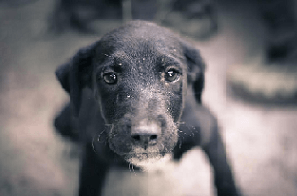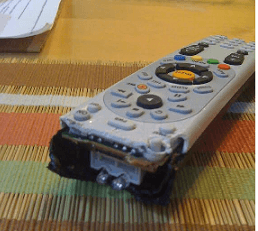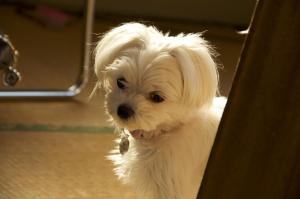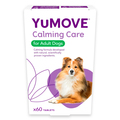Here is a scene in which many a pet owner will be familiar with.
You open the front door after a long day at work to discover there’s been a break-in. Overturned furniture, gouged windows and floors, the contents of drawers and surface tops littering the hallway. The answering machine is flashing away out of the corner of your eye, and the dog is going crazy. But wait. Why is nothing missing? The TV is still in position on the wall; your jewellery still lying on the counter. You take one look at your frantic canine pacing back and forth and ask yourself – is all this really the work of one home-alone dog?
Unfortunately, yes. Lonely dogs can do a lot of damage. Only recently has the term ‘separation anxiety’ been used to describe this sort of destructive behaviour. While it is often blanketed across a range of behavioural disorders from excessive vocalisation to indoor urinating and defecating, true separation anxiety involves these behaviours (and a whole load more) only when your dog is left alone. If he still urinates inside, claws at the furniture and barks incessantly when you’re at home, chances are it’s not separation anxiety that’s causing it.
So, if separation anxiety is a relatively new term, what did it used to be called? Dogs have always acted up in times of stress and fear but being home alone is relatively new in itself. Life is speeding up and in today’s busy world, both parents are routinely absent from the house for one reason or another. There was a time when one care-giver was around to give the dog companionship during the day but this isn’t always the case anymore.
 Just as life is getting busier it is also getting more expensive. We love our dogs and want to spend as much time with them as possible, but the reality is we have to work. This means we are frequently away from home and will probably come back too tired to deal with their boisterousness and pent-up energy. If your dog suffers severely from separation anxiety, returning to a house in disarray every time you pop out is going to frustrate even the most tolerant dog owner.
Just as life is getting busier it is also getting more expensive. We love our dogs and want to spend as much time with them as possible, but the reality is we have to work. This means we are frequently away from home and will probably come back too tired to deal with their boisterousness and pent-up energy. If your dog suffers severely from separation anxiety, returning to a house in disarray every time you pop out is going to frustrate even the most tolerant dog owner.
But it is important to remember why your dog is behaving this way. It isn't because it wants to destroy your home and make you upset. It's acting up because it misses you and has become dependent on your company without you realising it. If your dog has always been allowed to follow you around the house, sleep in your bedroom and been petted every time he's come to greet you, you may have unknowingly reinforced this dependency.
There is nothing wrong with showing your dog affection but he must also be confident on his own and learn how to behave without you. Ignoring your dog sometimes might seem harsh but it is a necessary part of training. Change can be a trigger for separation anxiety and transitions such as moving house, adoption into a new family and welcoming a new addition into the household can all provoke anxiety and distress. If you punish or scold your dog for its anxiety-related behaviour, not only will it fear the times you are gone, but it will come to fear the times you are there as well.
Training dogs out of their anxiety is difficult in adult dogs because, like us the older we get, they are less receptive to new instructions. Shelter dogs very often suffer from some degree of separation anxiety and usually form a strong attachment to one person in the household. While some dogs will be comforted by any other person or dog, shelter dogs won't be happy until their one attachment figure has returned. This is not always the case but is something to bear in mind when adopting an adult shelter dog. Dogs that are comforted by any human/animal presence are more likely suffering from isolation distress (the fear of being alone) rather than full-blown separation anxiety.
 Separation anxiety is often misdiagnosed and its usual symtoms of excessive barking and howling, urinating and defecating indoors, pacing, chewing, clawing and general destruction can be symptomatic of many other disorders. Certain medications can cause incontinence and in un-neutered dogs, urine marking is a common behavioural problem. If dogs are scared or excited, left inside for too long without being let out to use the toilet or are not properly house-trained, they will urinate inside even if you are at home.
Separation anxiety is often misdiagnosed and its usual symtoms of excessive barking and howling, urinating and defecating indoors, pacing, chewing, clawing and general destruction can be symptomatic of many other disorders. Certain medications can cause incontinence and in un-neutered dogs, urine marking is a common behavioural problem. If dogs are scared or excited, left inside for too long without being let out to use the toilet or are not properly house-trained, they will urinate inside even if you are at home.
Similarly, puppies that are just finding their feet and learning how to behave might be destructive, chewing their way through slippers and carpets and yapping all hours of the day, just as adult dogs that are bored and un-stimulated will be. Separation anxiety is the likely cause only if these behaviours occur when you are out, not all of the time, and every time you are out. Setting up a video camera is a good way of seeing what your dog is up to when you are gone. If the behaviour happens when you are home, take your dog along to the vet for a check-up.
How do I cope with my dog's separation anxiety?
As with most behavioural problems, prevention is much more effective than treatment. Get your dog used to being alone from a young age and you'll find he is much more confident when he is older. By this I don't mean going to work one day and returning 8 hours later in the hope your new puppy will have adjusted happily. Start small and build up to longer periods of absence. Crate training can be useful but only if it is introduced in puppyhood. Crating an adult dog with existing separation anxiety can be very harmful, as it will panic and try to wrestle its way out by whatever means necessary. If your dog has severe separation anxiety it is much better to avoid crating altogether.
Use positive reinforcement to teach your dog that separation can lead to praise and reward. Do this by leaving him to wander the house while you are in another room. Come out of the room after a short while and call your dog to you. When he emerges, make a fuss of him and give him a tasty treat. After a moment, turn your back and go back inside the room, closing the door behind you. Repeat this a few times daily, lengthening the amount of time you spend in the other room. Your dog will quickly come to learn that 1) you will always return, no matter how long you are gone for and 2) separation leads to a happy experience.
If your dog kicks up a fuss when you return to the other room, don't hurry back as this will only teach him that bad behaviour leads to your returning. Ideally you want him to learn that being calm rather than exciteable is what gets your attention. Wait until your dog settles down before coming back but make sure you are away for a shorter period next time and take things more gradually from there.
If you are training your dog to be in a particular room when you are gone, place a fun chew toy or a delicious treat inside the room when you leave so that your dog comes to associate your absence with something enjoyable. When you return, remove this item and pet your dog calmly. If this is done correctly, he should come to relish the times you are gone as much as the times you are there. Kong toys are ideal as they are robust enough for regular chewing and can be stuffed with treats for even greater appeal!
Using Adaptil can be very effective in relaxing your dog and decreasing his stress level. Place a diffuser in the room where your dog will be left or use an adaptil collar. Adaptil combines complex pheromones that induce a calm, feel-good atmosphere for your dog to soak up, helping to control and reduce his excitement. Along with a Kong treat toy, you may also want to leave a garment of clothing which bears your scent to comfort your dog in your absence.
Once your dog has become accustomed to being left alone with you inside, you can start venturing outside. Keep the periods short at first, returning before your dog has chance to work up a stupor. Keep farewells and greetings to a minimum, avoiding any gushing goodbyes and 'I love yous.' Some owners find it helpful to take their dog for a walk before they leave so that he is suitably relaxed by the time they depart. A tired exercised dog is less likely to make a fuss than a dog with pent-up energy.
When it does come time to leave, turn your back and walk out without any final touches or talking. On your return, wait until your dog has settled down from the excitement of seeing you before saying a calm hello. If he is praised or rewarded for his excitement and noise, he will learn that this type of behaviour is what brings you home. The idea is that by keeping your comings-and-goings as low-key as possible, you are making the contrast between you being there and not being there a lot less obvious. Big emotional goodbyes will make it harder for your dog to accept your absence when it does happen.
Make sure you reinforce all these cues throughout puppyhood when your dog is most receptive to them. If they are done correctly, by the time your dog is older he should be able to cope happily with you being gone a few hours. Having another dog or cat can work wonders for some dogs, while helping very little for those with more severe anxiety. If you have a neighbour that can let your dog out during the day for a toilet break or take him for a short walk, even better! Even after training, don't have unfair expectations of your dog; expecting him to go a number of hours without fresh air or relieving himself is unrealistic and unfair.
If, on the other hand, you are adopting an older dog, start his training as soon as you get him home. Be consistent and remember to reward separation, only if your dog is calm and composed. Pandering to his anxiety will only be of detriment to any previous training and will undo any good work thus far. Remain calm and assertive yourself, never shouting at, punishing or scolding your dog, and work at a gradual pace so that he can adjust naturally. Besides this, keep your dog physically and mentally enriched with consistent training and interactive play when you are at home, to build his confidence and keep him fit and healthy.
If you have any further tips or information on coping with canine separation anxiety, please share them with us! If you have any questions or suggestions for future blog posts, please email me: [email protected]
Written by: Hannah








